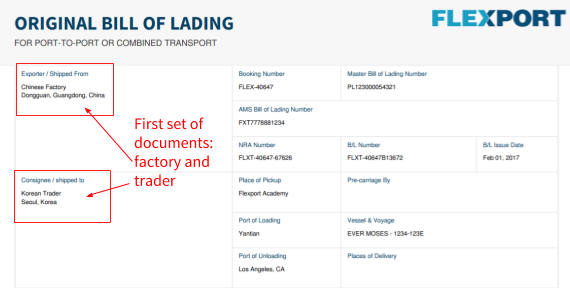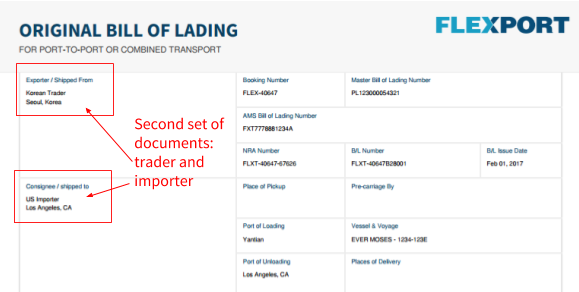Help Center Article
What Is a Switch Bill of Lading?
Tags:
A switch bill of lading is used in triangle trades, to ensure that a bill of lading is issued for every transaction taking place.
What Is a Switch Bill of Lading?
Triangle trades are a very common occurrence in global trade. Importers who purchase goods from overseas might not necessarily be purchasing the goods from the factory itself, but rather from a middleman or trader who might be located somewhere else.
Therefore, the actual movement of the goods does not accurately represent the transaction taking place. Although the goods may be moving directly from the factory to the importer, the commercial transactions follow a different path.
When it comes to the documentation, the shipping documents must also match all the commercial transactions within the shipment.
In a simple triangle trade, the factory is selling the goods to the trader, who is selling the same goods to the importer. As such, a bill of lading needs to be issued for every transaction taking place, so a second set, or switch bill of lading, needs to be issued for this shipment.
The first set of bills of lading needs to be issued with the factory as the shipper and the trader as the consignee. For example:

Once the goods are fully released from the factory to the trader (i.e. the trader has paid the factory for the goods), then this first set of bills of lading will be “switched” out for a second set. This second set of bills of lading are issued with the trader as the shipper and the importer as the consignee:

Please note that the shipment cannot be released to the final buyer until the trade terms between the buyer and the seller of the first sale have first been settled. Once the seller has been paid and the trade terms are settled, the cargo can be released to the second buyer after the second buyer presents the original bill of lading to Flexport. However, delays may occur if the second buyer presents the original bill of lading to Flexport before the trade terms between the buyer and seller of the first sale have been settled. To avoid these delays, consider using an express switch bill of lading.
When would a switch bill of lading be necessary?
Generally, a switch bill of lading is used to conceal the identity of the factory. Because the trader is selling the goods to the importer, the trader does not want to reveal the factory from which they are procuring the goods. Thus, the trader will often request that a switch bill of lading be used for their shipments.
